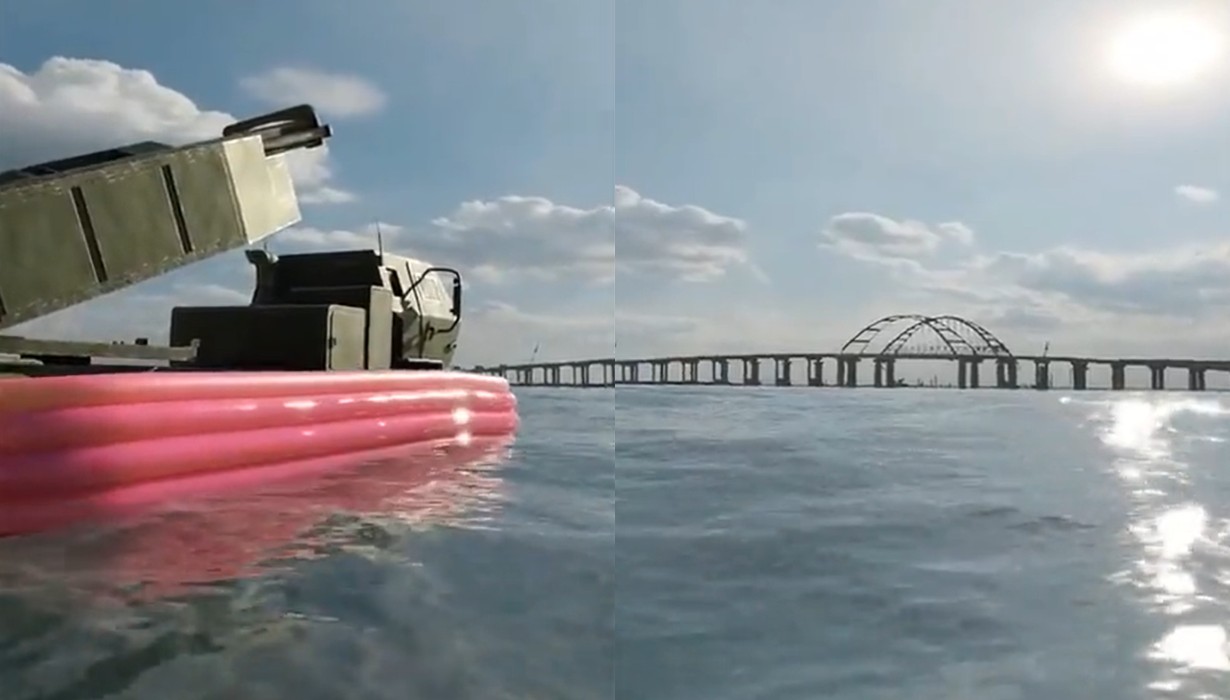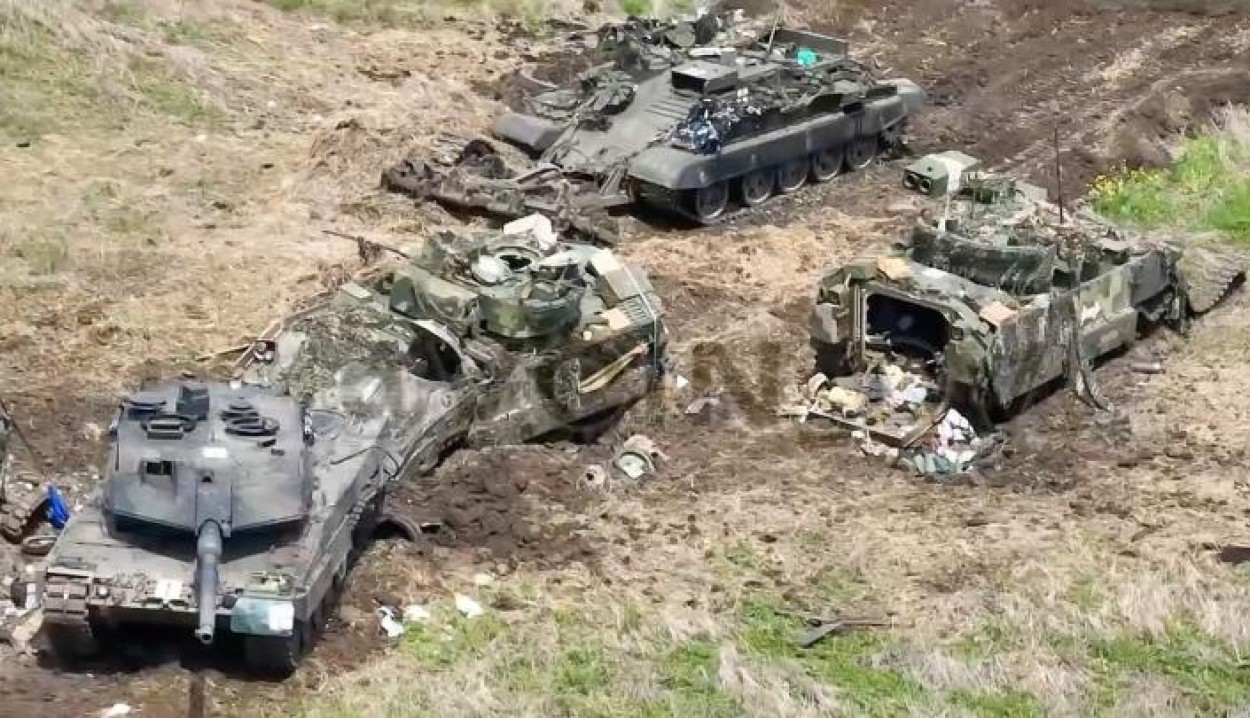As reports documenting Ukraine’s loss of equipment continue to surface on social media vindicating Russia’s ‘combat victories’ against Kyiv’s forces, it has come to notice that most of them are just decoys that Moscow seems to be destroying.
First Submarine Sunk? Reports Swirl Over Ukraine Hitting Russian Kilo-Class Sub; RuMoD Confirms Attack
Western media recently reported that Ukrainian weapon experts were racing against time to churn out decoys made out of steel, wood, and even plastic to deceive the Russian military. This comes in the wake of Russian claims of destroying cutting-edge systems like HIMARS, Leopard-2 tanks, M777 Howitzers, etc.
In early September, it became known that these decoys, once deployed, looked so real that Russian combatants and drone camera operators were coaxed into hitting them. Ultimately, the Ukrainians were simply exhausting Russian drones and expensive precision-guided missiles.
A weapon expert from Ukraine told TheGuardian, “When the military comes to us and says ‘we are out of these,’ it means we were successful in our job.” These experts have collected destroyed Russian equipment like Shahed and ZALA Lancet-3 that were successfully baited by the decoys as combat souvenirs.
Having said that, hundreds of fake mortars, tanks, and howitzers are being set up by Ukrainian forces, forcing the Russians to deplete their arsenal of drones, missiles, and shells. This has been hailed by some experts as Ukraine’s learnings from the Soviet deception tactic called “maskirovka.”
According to a report by CNN published on September 12, the Ukrainian Metinvest group, which switched production to military rails as soon as the full-scale invasion began, has been actively assisting the Ukrainian military in producing iron or steel decoy equipment for deployment.
The list of weapons includes air defense radars, mortar tubes, Ukrainian D-20 gun-howitzers, American M777 howitzers, and more, according to the report. Chances are, if a piece of equipment is deployed and in use in Ukraine, Metinvest has already replicated it or is now doing so within the little hangar that is tucked away on the outskirts of a sizable industrial site in central Ukraine.
There are a wide variety of copies of the most cutting-edge American and European equipment there. The goal, according to the spokesperson, is to simultaneously save Ukrainian lives while deceiving the Russians into wasting their own extremely expensive kamikaze drones, artillery shells, and precision missiles.
“War is expensive, and we need the Russians to spend money using drones and missiles to destroy our decoys,” explained the spokesperson of Metinvest. “After all, drones and missiles are expensive. Our models are much, much cheaper.”
These developments are significant as they come at a time when Russia’s arms industry is believed to be going against the obstacles created by international sanctions and overstretching resources to produce missiles, which are, in turn, getting depleted rapidly. The abysmal cost differential between Russian munitions and Ukrainian decoys makes it all the worse.
Consider the M777 155mm howitzer as an example. It costs many million dollars to buy the real equipment. In contrast, the decoy is less than $1000 in price and uses nothing fancier than ancient sewer pipe. However, it costs Russian soldiers the same – a drone.
The spokesperson claimed that the decoys were initially somewhat primitive. To make Ukraine appear better armed than it was, the company’s employees hurried to produce copies that could be delivered to the front lines should the war break out. However, as the war dragged on and more advanced weapons entered the nation, Metinvest’s ruses also advanced.
While the company is being lauded for its production of decoys, this is not the first time since the war started that Ukraine has baited Russian troops using decoys. It has been going on for as long as we can remember, with the invading forces continuously falling for it. EurAsian Times rewinds to find out.
Ukraine’s Decoy Deception Working In Full Force
In the initial days of the invasion in March last year, reports coming directly from the battlefield first suggested that the beleaguered troops were using decoys to bait Russia into wasting its expensive ammunition. The deployment of decoys became more common and pronounced as the war dragged on and Western aid started to pour in.
Photos from the Ukrainian battlefield emerging on social media in May 2022 revealed a peculiar tactic being used by the Ukrainian military. In some regions along the frontlines, decoy mannequins dressed in military fatigues were being used to trick Russian forces into believing they were real targets.

The mannequins were positioned to disorient any approaching forces that might try to push forward. They were seen armed with dummy guns and other homemade weaponry that were pointed at the enemy.
Moreover, Russia claiming to have destroyed more HIMARS than were even delivered by the US to Ukraine was another instance that exposed the increasing use of decoys by Ukrainian forces.
These claims, however, redirected us to reports that Ukraine was deploying dummy HIMARS, mostly made of wood. The report said that at least ten Russian Kalibr cruise missiles were lured to the decoy versions of US-supplied rocket launcher systems, prompting Ukraine to increase manufacturing HIMARS replicas to entice Moscow into launching its expensive long-range missiles on bogus targets.

A video surfaced online showing Ukraine was also procuring HIMARS inflatables from a Czech company to befool Russian forces. A company from Děčín was known to be manufacturing inflatable decoy targets resembling HIMARS rocket launchers and M270 MLRS for Ukraine.
At the time, the manufacturer told the media that at least thirty-five decoys, including HIMARS, are produced monthly. These decoy targets, disguised as real HIMARS, were deployed to exhaust Russia’s expensive missiles.

However, an official video released by Ukraine’s Ministry of Defense asserted that not even a single HIMARS was destroyed to date and showed that these systems were parked inside nuclear bunkers to protect them from a missile or drone attack.
The use of rocket system decoys is just one of many asymmetrical tactics the Ukrainian military has used to repel a stronger and larger invading army. These targets, which mistake the decoys for real HIMARS MLRS, are located by Russia using its UAVs. The decoy is then targeted with a costly missile, such as a Kalibr.
In addition to M777 Howitzers and HIMARS, Ukrainians are also deploying decoys of Leopard-2 tanks, Russia’s most sought-after target.
In May this year, it was also reported that inflatable Leopard 2A4 tank decoys were being supplied to Ukraine. At the International Defense and Security Technology Fair (IDET) 2023 show, Czech-based company Inflatech reportedly displayed Leopard 2A4 and Czech STARKOM communication jammer decoys.

All these decoys, across types and utilities, are just ruses meant to attract Russian fire, depleting Russian missiles, drones, and hostile ammunition while defending actual equipment and the soldiers manning it. In addition to being expensive for Russia, hitting a decoy would mean one less attack on an actual Ukrainian target.
“These can save the lives of our guys, our friends who are serving,” said a worker in Metinvest. “We have an agreement with the military to share pictures and remains of attacks (on decoys) as proof we did a good job.”
- Contact the author at sakshi.tiwari9555 (at) gmail.com
- Follow EurAsian Times on Google News




